ER ... Here's a chart that I'll reference in the post:
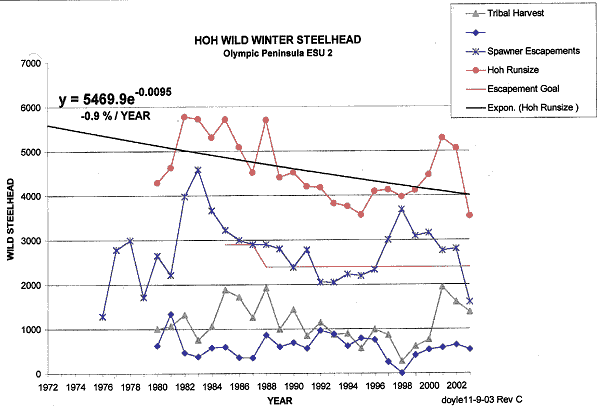
For many years the "upper" Hoh was home water for me. "Upper" is a relative term as when measured in river miles, it's more like the middle section ... from the boat ramp at the National Park boundary to 101. There is a load of open water above that uppermost launch that is open to fishing, but usually limited to bank traffic only.
For a variety of reasons ... primarily number of fish to be found and changes to the river channel making it more / less conducive to the styles I like to fish, I've found myself fishing that piece of water less and less in recent years.
Your friend's statement that "most of the guides" fish up there is far from the case. From 101 / Oxbow (boundary has changed over th past few years) up, the river has been under selective fishery rules since 1998 I believe (a year either way ... they start to blend

) ... so without bait usage and no kill, most go elsewhere, especially now that the majority of "regular" guides all sidedrift eggs these days.
Yes, fish spawn there. But much of the run, especially later in the year ... also spawns below 101.
That's a common fallacy that has become popular belief amongst some anglers in recent years as selective regulations were emplaced on all the Forks-area streams in the latter part of the '90's.
On these short coastal streams ... it's ALL spawning water.
In fact, late in the season (now), most of the sapwning activity takes place in the lowermost reaches of all the rivers.
It's a natural part of fish runs ... the fish that have the furthest to travel to their natal grounds usually come into the river the earliest and vice versa.
Man has made the distinction between "upper" and "lower". As river miles go, what anglers refer to as the "upper Hoh" is the same as the Hatchery run in the Bogachiel or the lower Calawah or the lower middle portions of the Sol Duc. Because we have a highway that crosses these streams away from the coastline ... that's become our definition of "upper" and "lower".
I've never seen a sport boat marking a redd in any river, in any stretch. Bios often mark salmon beds in the upper Hoh with ribbons tied in trees above the bed ... but I can't say that I've seen that in steelie season. I have seen lots if it in the middle portion of the Sol Duc and the Calawah below the Forks.
I included the escapement graph above because I think the fact that we've made over 2/3 - 3/4 of the open river a selective fishery that we saw some immediate results in the late 90's of escapements getting just back over goal after several years in a row of not making the goal.
The upper river has always allowed for more angler days than the lower river due to visibility issues and by effectively reducing harvest levels by having no kill in those areas that were most frequently available to fish (not necessarily the heaviest fished ... as I said, most guides wish to run bait whether they're keeping or not). I believe this reduced area to harvest has been one of the only things that has kept the river from a complete collapse.
Yet, sport harvest has remained steady as we've seenthe pressure increase over the years on the heels of closures in other areas. Had the entire river remained open ... I think the Hoh would definitely be a fishery of memory at the moment. It's still headed down though, and thus the push to protect it before it's too late and numbers won't support any sort of a fishery.
Would closing the upper river be good for the fishery?
Sure it would, but it would help the run more if we eliminated harvest on the lower river. Remember that all intentional harvest takes place in the lower river and and even at 10% mortality (an extremely high rate for a selctive fishery), anglers in the upper river would have to catch 6000-10,000 fish to equal the impact that is currently in place by harvesting sports anglers in the lower river ... that's almost double the entire run size, in a section that's 2-3 times the amount of open water down below.
I'm a big proponent of opportunity. Long seasons, long stretches of open water. Sure the long seasons help me on the busieness end ... but lots of open water makes the fishery more enjoyable for everyone. In addition, I thionk it's important to spread our impact as much as possible because they DO spawn everywhere. Does a healthy run of fish mean that they all spawn in one area? No, of course it doesn't.
Mother Nature intended that fish spawn all up and down these rivers, and I think it's important that we try to keep it that way.
That's another pitfall of current management schemes ... the shorter the distance a fish has to spawn, the greater the repeat spawning percentage. Since it's well documented that repeat females are far more productive spawners that first time spawning females, if we're killing all the lower river spawners, you're going to see a decrease in the productivity of the escapement that you have.
Hope this answers your questions







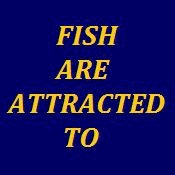
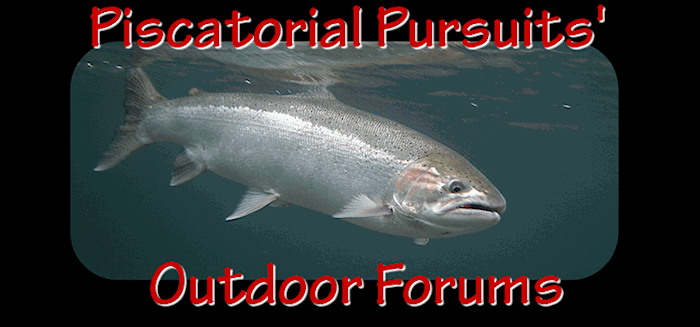
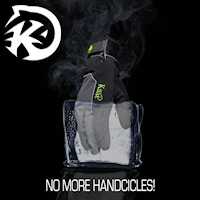




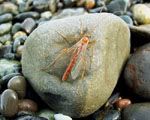





 Previous Topic
Previous Topic Index
Index

